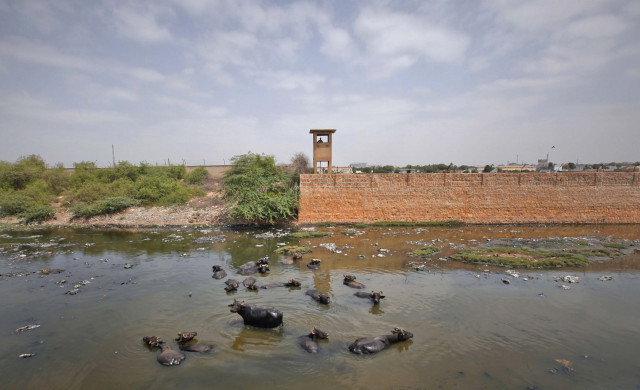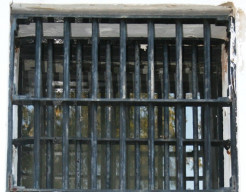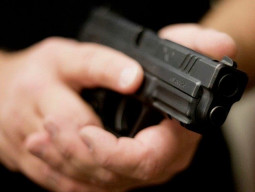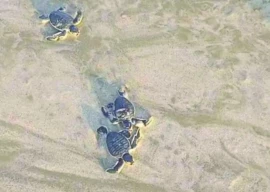
After a 17-hour battle of nerves with six terrorists, the Pakistan Navy invited journalists to a tour of PNS Mehran base.
At around 5 pm on Monday, a group of journalists boarded a bus that took them around all the places they had been reporting on since Sunday night. As the bureau chief for Express News, I also joined this group.
Even though the tour was short, the intelligence officers made sure they showed us all the places where the navy, Rangers and air force commandoes fought the terrorists. They gave us a briefing on how the terrorists entered the base and carried out the siege. Cameras were, however, prohibited and even the Inter-Services Public Relations cameras were not allowed to record any footage.
As the bus rounded the main building, the officer pointed to his left side and showed us the spot where they found the first terrorist. The body was lying in an open space next to three-foot-high bushes and forensic experts were gathering samples to determine his ethnicity. By this time, rigor mortis had set in.
The man lying down appeared to be between 22 and 25 years old. He was well-built, with medium height and had a fair complexion. He was wearing black cargo pants with a black T-shirt and the officer announced he had died eight hours ago.
The bus then took us to a spot where another terrorist’s body was lying. I looked at him closely and I could tell he resembled his accomplice I saw earlier. The intelligence officer suggested these men may be Uzbeks but he added quickly that nothing could be said until the forensic reports come out.
The bus also passed a pile of ashes that were once Pakistan Navy’s valuable assets for surveillance. As a Pakistani, I too felt the pain of losing the aircraft.
The officer then showed us the first wall through which the terrorists might have entered. The barbed wires on the top were cut. The officer told us that the wall falls under the jurisdiction of the PAF.
I noticed that a few closed-circuit television cameras were mounted on this wall. Judging by the distance, the terrorist would have had to travel a relatively long distance to reach the aircraft hangar once they breached the wall.
The first resistance they met was from the check-post guard and other officials stationed there. By this time, the Rapid Response Force reached the site and challenged the terrorists, who were already halfway inside the base. Rapid Response Force’s Lt Yasir Abbas was the first one to be martyred in the operation because, the officer elaborated, if Lt Abbas had not intercepted the terrorists, there would have been a lot more damage.
By this time, the terrorists had already entered the base and they fired Russian rocket-propelled grenades at the P3-C Orion aircraft and destroyed them.
At this point, the officer parried all questions about how the terrorists managed to bypass the security system of the military installation. Why were the barbed wires not electrified? Was there anyone monitoring the surveillance cameras and did no one notice when the terrorists cut their wires and the screens went blank?
The bus then moved towards the building the terrorists had occupied. It was pockmarked with bullet holes. This was the same building from where the terrorists fought the commandos by changing their positions behind sandbags. The building is constructed in such a way that there are several interconnected doors that make it easier for the people to move around - something the terrorists clearly took advantage of.
At one point, the commandos did manage to confine two of the terrorists to the rear end of the building. When the security forces asked the terrorists to drop their weapons, one of the terrorists replied in Urdu that, “I know what will happen to me if I’m caught”. After this, both the terrorists blew themselves up and the room collapsed.
The remains of one of the terrorists were visible and the intelligence officer said that they believe the other one is buried under the debris. Here too, the forensic experts were busy collecting samples. The officer clarified that we cannot assume that the terrorist was a local resident just because he replied in Urdu.
There were over three dozen aircraft and helicopters parked near the building where most of the fighting took place. Denying any security lapse, the officer said their guard was vigilant and he was the one who put up a fight.
Published in The Express Tribune, May 25th, 2011.


















COMMENTS
Comments are moderated and generally will be posted if they are on-topic and not abusive.
For more information, please see our Comments FAQ